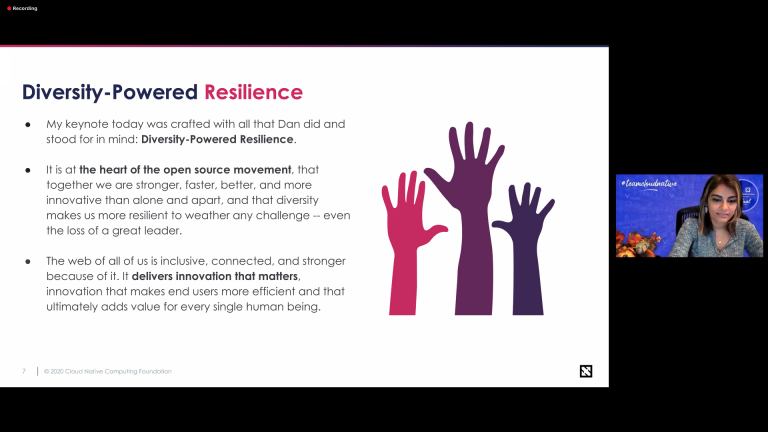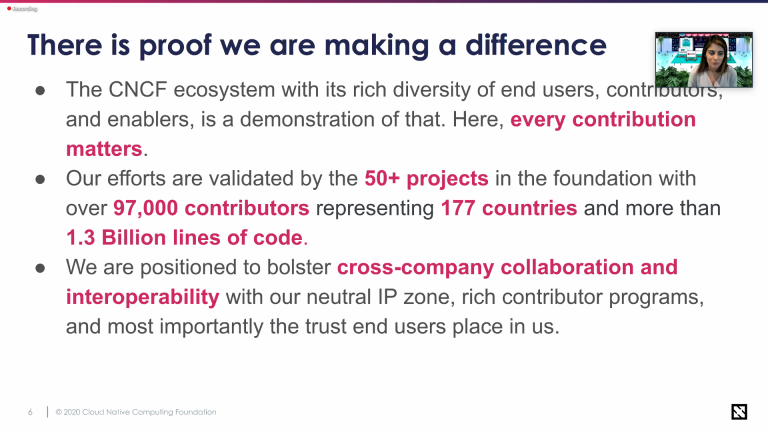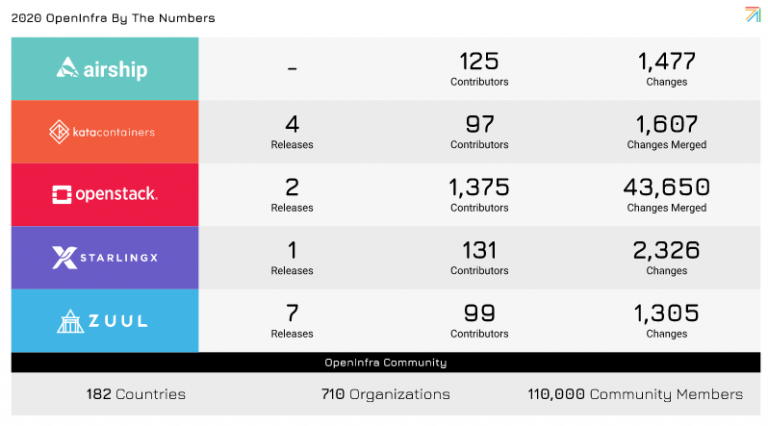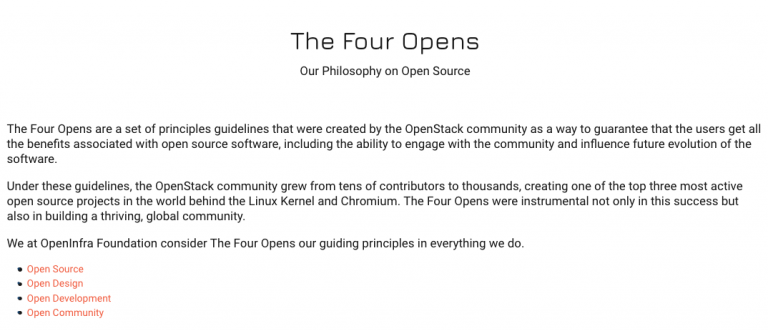
We love Open Infrastructure
by Friederike Zelke, initially published by The Cloud Report. This article celebrates the value of open infrastructure, spotlighting the significant contributions of open-source communities to technology and society, especially during challenging times. It highlights the communal ethos of organizations like CNCF and OIF, underscoring the importance of collaboration, diversity, and inclusion in driving innovation and sustainable development within the tech industry.

The last year has influenced many things, and we have noticed it most in our professional lives in the way we work together. We are now used to communicating and working via a screen and sharing resources. But for a large part of the IT world, this was not new – the open source communities.
But it wasn’t just the way of collaboration and interaction that brought open source even closer to us. In fact, it’s more a different aspect. In spring of last year, we were all more or less overwhelmed by the situation, but instead of thinking in solidarity and looking for common solutions, most people acted exclusively selfishly, racking up what they could and fighting over toilet paper and about wearing masks.
Here in Germany, we live in an affluent society; no one was in any way threatened existentially, except for those who actually contracted Corona, who at that time were still very few. The call for public spirit arose relatively quickly, for reasonable action and mutual consideration, but this was only heard over time. This reaction showed everyone that people seem to be more inclined to build walls, to shut themselves off, to protect themselves than to act together.
Two of the largest open source foundations, CloudNative Computing Foundation (CNCF) and the Open Infrastructure Foundation (OIF), set an example against egoism and boundaries at their events last year.
Diversity
Digitization and the expansion of cloud services were in focus everywhere last year in order to be able to work and communicate at all. In the open source communities, this kind of collaboration and communication has been established for a long time; there are platforms where data, developments and open questions are collected, and forums where discussions, learning and development take place.
The big challenges of the last year were not for open source experienced engineers, the tools and the way to work with them were not new. But it is much more important that behind the handling of the digital possibilities in the open source communities there is a real mindset that is so much in contrast to the behaviour of most in the last year: The CNCF and also the OIF and all other open source communities and foundations stand for openness, for focusing on ideas, for transparency, for real collaboration, for creating solutions together, for sharing resources openly, for respecting each other´s ideas and experiences. This shows they also stand for true sustainability, not only the preservation of natural resources, but also the use of human resources.

The CNCF has made diversity its main theme, the strength of open source, of community (fig. 1 and 2). With the CNCF’s choice of “diversity” they bring all these points together: the community is made up of a lot of individuals from all over the world (over 103,000 contributors representing 177 countries after five years of Foundation work). They bring in their ideas, experiences, questions and solution strategies, contribute, drive other ideas forward, so that the sum becomes greater than the individual parts.
It is very good and so important to be aware that each contributing individual is valuable! Every idea and question advance the community, no matter who they come from. As part of the community, it does not matter in a positive sense where a person comes from, what gender he or she (or ?) feels they belong to, or what their appearance is like.
The only things that matter are ideas, experience, passion for the content and openness to new solutions. And it was important to me that I am not alone in my desire for such a community. Priyanka Sharma, general manager of the CNCF, summed it up accordingly in her KubeCon keynote: This diversity is also at the heart of the open source movement. Together we are stronger, faster, better, and more innovative than alone and apart, and that diversity makes us more resilient to weather any challenge.

Leaving aside the social aspect of the community for a moment, she is also right on another level: on the whole, open source development is faster, of better quality, more innovative and sustainable in the long term. Without the preparatory work of the open source communities, every developer would have to start over again and again and could only fall back on his own experience, which means that many solutions would not even be available to him/her/? The many-eyes principle ensures that the code is cleaner and better documented, and above all it is more secure, because possible vulnerabilities are noticed much more quickly and can be fixed.

Open!
But back to what actually concerns me. After the CNCF already focused on the community at the KubeCons, the OIF also focused on it at its Summit. There, of course, the focus was on the founding of the OIF, which is a logical extension of the OpenStack Foundation. The OIF is a community of projects and companies for the provision and further development of open source infrastructure software, with 110,000 members and contributors from 182 different countries (fig. 3).2
The desire of this foundation is to provide a foundation for cloud-enabled infrastructure. Mark Collier, COO of the OIF, said at the Open Infrastructure Summit that anyone with access to the internet and a computer should be able to participate in two ways, firstly as a contributor and secondly, of course, as a user of the programs that are available as open source. This clearly also has a social aspect. The hurdle to participate in open infrastructure is very low and everyone is welcome. But anyone can also use the applications provided by open source and build up a business with them.
Anyone with a good idea has the opportunity to implement it without having to buy expensive software licenses or become dependent on a provider. Thus, open source also offers a kind of freedom and design possibilities.

The OIF has also formulated its principles and presented them at the Summit: the four opens (fig. 4).3 They make it just as clear what they stand for and how they work together: open, technology-oriented, impartially, global, inviting – thinking borderless.
Both of these great foundations have spoken from my heart. The open source communities show how progress in the world should look like, how it can work in a sustainable and engaging way, but above all what real togetherness can achieve, what community without prejudice, but cooperation can bring in ideas for great results. Cooperate with openness and respect. A lot of people can take a leaf out of this approach.
We are, of course, members of both foundations because we work and contribute in a cloud-native, open source way. We were happy to become a member of the newly founded OIF, because we love open infrastructure!